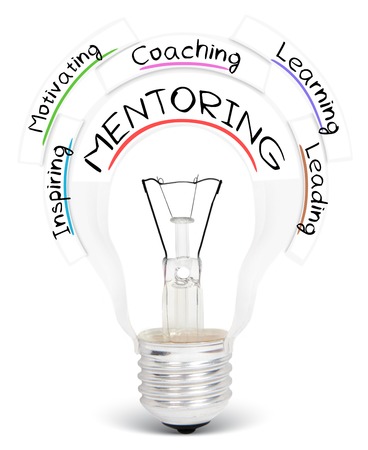Corporate Mentoring Programs at Work
Randy Emelo’s 2015 book Modern Mentoring took the HR world by storm and quickly became a top seller for publisher ATD Press. In this revolutionary tome, Emelo provides ideas on how organizations can bring a fresh approach to mentoring that is better suited to today’s technologically focused work world, and he outlines how business mentoring programs can use e-mentoring technology to run more effective and efficient programs.
In the book, Emelo discusses how mentoring can go beyond just the traditional one-to-one pairs where a young up-and-comer is hand-picked to learn at the feet of a wise older mentor (who is also likely a senior executive at the company). He talks about the ideas of group mentoring, reverse mentoring, and peer mentoring as ways to expand the application of mentoring in organizations, while also diving into the concept of allowing people to engage in learning relationships that they choose for themselves. Emelo also examines how mentoring software and technology can help people connect in virtual mentoring relationships, tearing apart the antiquated concept that mentoring relationships have to occur face-to-face.

Since the book was published, Emelo and the team at MentorcliQ have been immersed in the modern mentoring approach as mentoring software providers and thought leaders. While none of the core concepts from Emelo’s book have changed, we have learned valuable lessons that can help make running a mentoring program more effective for administrators, and help make being a part of a mentoring program more engaging for mentees and mentors.
Lesson #1: Give Mentees and Mentors Structure and Purpose
One of the biggest lessons we learned over the past few years is that the if-you-build-it-they-will-come approach does not work. Sure, you might get a handful of people who seek out and proactively sign themselves up to participate in a mentoring program. The majority of people just won’t do this, however. Mentees and mentors need to have a structure provided to them for mentoring, something that gives them a reason and purpose for joining. By using mentoring software in a targeted way, administrators can pull key participants in as mentees and mentors (see Lesson #2), and the participants can then build goal-driven mentoring relationships that have a clear focus and intention.

Lesson #2: Tie Mentoring to a Core Business Need
A wide-open mentoring program is a noble idea, but not a very effective way to bring mentoring to your organization. We’ve learned over the years that mentoring needs to be connected to a broader employee development program in order for it to take hold. Mentoring in and of itself is a great practice, but unless people have a reason for participating, the odds that they will do so are not in your favor.
Tying mentoring to programs like high potential development, onboarding, succession planning, and diversity and inclusions initiatives is a proven success strategy. Administrators have a built-in audience that is primed to be their mentees and mentors. Those participants have a clear understanding about why they are involved in the mentoring program (see Lesson #1), and administrators can have an easier time explaining how mentoring will play a role in both their development and in the broader initiative (e.g., high potential development).
Lesson #3: Promote the Mentoring Program Passionately
Organizations typically offer many different learning and development options to their employees, which can make it hard to gain the attention of employees when you want them to focus on your initiative or program. We have seen great mentoring programs flounder because there was no one driving the promotion of the program internally. A mentoring program cannot grow or survive without care and nurturing from someone. Giving your mentoring program a passionate advocate and voice is a great first step for building awareness of your mentoring program. Administrators and those supporting the program (e.g., executive sponsors) need to talk about the program, share why it is important, provide resources to remind people that the program is available, and continuously promote the program in multiple ways.

They could send an email to prospective mentees and mentors one week, speak at a meeting with their core audience another week, write blogs and social media posts for the organization’s internal communication sites at the same time, and post flyers in common areas like the break room to help remind people that there is a mentoring program available at the organization. The key to all of this is constant and continuous promotion so that the mentoring program stays on people’s radar.
Lesson #4: Use Mentoring Groups Wisely
Just like mentoring programs in general, we found that the idea of mentoring groups didn’t always gel with reality. Groups are a great way to bring people together to learn from one another and share ideas, but unless someone is actively leading the group, we learned that most groups will stall out. It’s not from a lack of interest or desire to participate, but from a simple lack of direction on what to do once the group gets going. Mentoring groups work best when they are run by someone who takes the lead for initiating activities and discussions. This can be a mentor or a group facilitator.
That person will be responsible for setting up meetings when needed, giving group members assignments that will further their learning and development, asking people questions to spur dialogue, and so on. A leaderless group won’t get very far, unfortunately. But having someone committed to the growth and success of the group can make all the difference.
These are just a few of the lessons we’ve learned in recent years as we pushed the ideas found in Modern Mentoring. As a practice, mentoring continues to evolve, and we are sure that the lessons we have learned up to this point will change as time goes on. And that is the beauty of mentoring…we never stop learning. So don’t be discouraged if you tried out a concept and it didn’t work for your organization. Look for ways to modify your approach and learn from what we’ve done. Mentoring is not a one-size-fits-all practice, but is definitely a worthwhile practice.




